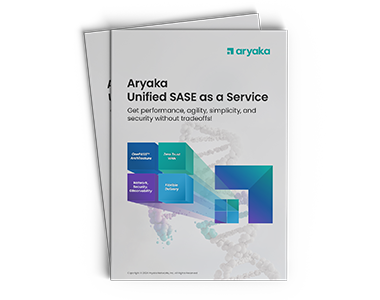SD-WAN Overlay – A broken promise of (not) delivering application performance

Expectations from WAN solutions and their ability to deliver application performance has evolved over the last decade as the application landscape and WAN solutions themselves have gone through a sea change.
A Brief Look At Past and Present
During the early 2010s, MPLS became the preferred solution to deliver WAN connectivity between branch offices, headquarters, and data centers for the enterprise. The enterprise application landscape was simpler. Applications were fewer, monolithic, and were hosted either at the HQ or at the data center. Robust connectivity from branch offices to both the HQ and to data centers was sufficient to guarantee application performance for the users in the branch offices. MPLS did that reliably and was able to deliver decent application performance for enterprise users.
Subsequently, the inflexibility and high cost of MPLS paved the way to an SD-WAN overlay orchestrator. An SD-WAN overlay made the WAN networks more flexible and took advantage of lower cost Internet paths for less critical applications, while also reducing cost. Another important expectation from SD-WAN is to deliver application performance. Aryaka’s 5th annual SOTW report states that application performance has been a major driver to migrate to SD-WAN for over 30 % of respondents. Meanwhile, the enterprise application landscape has been evolving and becoming more complex in following ways:
- Increasing number of Applications: Typical enterprises have 100s of applications running, and the number continues to increase rapidly. As reported in Aryaka’s 2021 State Of The WAN Report, the number of enterprises with over 500 known applications has grown by almost 50%, from 32% to 47%.
- Distributed Application Architecture: The application architecture that used to be monolithic and hosted at single location has become distributed and hosted at various locations: on premises, in data centers, in the public cloud, etc.
- Distributed Users: Users are no longer restricted to offices behind private networks, rather distributed anywhere accessing applications over the Internet.
- Business Criticality of Applications: Applications have become central to the business. The application layer is where technology meets the business and revenue is realized in the digital economy. Any disruption to application performance or availability results in real loss of revenue or an increase in costs.
Increased complexity and business criticality has made delivering application performance hard and yet it remains crucial, more than ever! In fact, it is so important that, for enterprises, the objective of the WAN is steadily shifting from just providing robust connectivity to ensuring a consistently great application experience for its users.
A Broken Promise
SD-WAN overlay architectures eased MPLS shortcomings of inflexibility and cost. But an SD-WAN overlay architecture did not prove to be such a great solution for delivering application performance. The fundamental shortcoming has been the separation of the underlay transport network and overlay virtual orchestrator. A SD-WAN overlay orchestrator is able to perform application traffic steering over the underlay networks based on policies. But an SD-WAN overlay neither has control over underlay networks to deliver the QoS and nor visibility into the underlay network when bottlenecks occur. The main challenges that enterprise IT teams are facing in ensuring application performance can be summarized in the points below:
Lack of Visibility: The virtual overlay has no visibility into the underlay transport network. When application issues appear, troubleshooting application issues with the underlay transport network becomes much harder. A survey by Sirkin Research found out that 35% of network professionals reported poor visibility and monitoring performance across all network fabrics as a challenge or a major challenge.
Lack of Control: An Overlay SD-WAN orchestrator defines QoS policy but actual delivery of QoS is outsourced to the underlay transport network. The SD-WAN orchestrator has no control over the transport medium. In the case where the underlay network fails to deliver QoS, the orchestrator cannot fix the bottleneck rather simply and has to find alternative network that satisfies the QoS.
Complexity: Defining and applying application policies in an SD-WAN orchestrator for multiple underlay transport network is way too complex, despite vendors’ promises to the contrary. Further, Sirkin Research found out that 31% of network professionals reported spending too much time managing cumbersome workflows between critical systems as a challenge or a major challenge.
As a result, application performance has suffered under an SD-WAN overlay architecture.
More Tools Are Part Of The Problem
Enterprises augment Overlay SD-WAN with many other visibility and control tools to manage the underlay transport network(s). An EMA survey [1] reports that over 64% of enterprises use between 4 to 10 separate tools and another 17% use more than 10 tools for network and application visibility. As a result, delivering application performance in a hybrid world has become disjointed patchwork of separate tools for the cloud, the on-premises network, virtual overlays, and underlay tunnels. This increasing number of tools has created a ‘tools sprawl’ and swivel chair environment for IT teams, creating more operational complexity and increased Mean-Time-to-Resolution (MTTR). Even with more tools, IT teams are unable to proactively identify performance issues or corelate application performance problems with underlay network issues. 38% find this to be a challenge or major challenge.
Even though SD-WAN achieved its stated goal of flexibility and cost reduction compared to MPLS, in certain measures, it made delivering of application performance worse. As a result, applications experience is one of the top CIOs concerns. Contrary to the expectations of many who migrated their legacy enterprise networks to an SD-WAN Overlay to get better application performance, it is not delivering on promise of application performance
Future Outlook
In my next blog, I will explore how a cloud-first approach to a WAN solution, without the separation of overlay and underlay networks, can close the gaps of an SD-WAN overlay architecture to ensure application experience for users of enterprise networks.
Also, don’t miss to join the Aryaka Breakthrough event on December 7 at 10 AM PST.
Resources
[1] Networkworld article – How to consolidate network management tools
Sirkin Research 2019 Top Network Performance Challenges
Aryaka’s 5th Annual Global State of the WAN
- Calypso improved Microsoft SharePoint and Exchange performance by up to 13x
- Bajaj Electricals Enhances VoIP and Web-Conferencing Application Performance
- ThoughtWorks Chooses Aryaka SmartConnect for Faster Application Performance
- Xactly Replaces MPLS, Achieves 6x Faster RDP Performance
- Schenck Process Deploys Unified, Global Network and Solves Global Application Performance Issues
- NVIDIA Experiences 80% Faster Application Performance
- Global Retailer Displaces MPLS to Achieve 20X Faster App Performance
- Enterprise Professional Services company Improves App Performance
- Here’s What No One Tells You About Application Performance
- SD-WAN Solutions for Office 365 Application Performance
- How Latency, Packet Loss, and Distance Kill Application Performance
- How SD-WAN Can Improve Office 365 Application Performance 20x
- SD-WAN Solutions for Office 365 Application Performance
- How to Improve Application Performance for the Remote and Mobile Workforce
- How SD-WAN Can Improve Application Performance for Global Enterprises
- Are SaaS Cloud Applications Slowing You Down?



